|
|
|
|
|
|
|
|
|
|
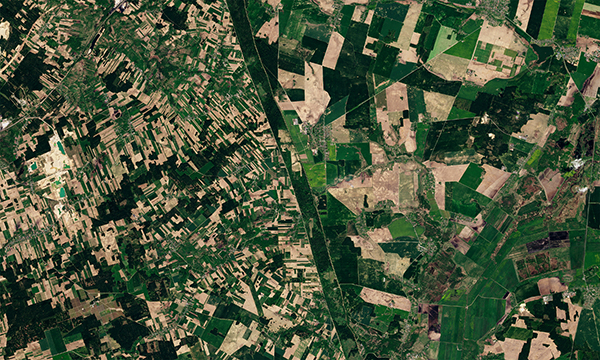 |
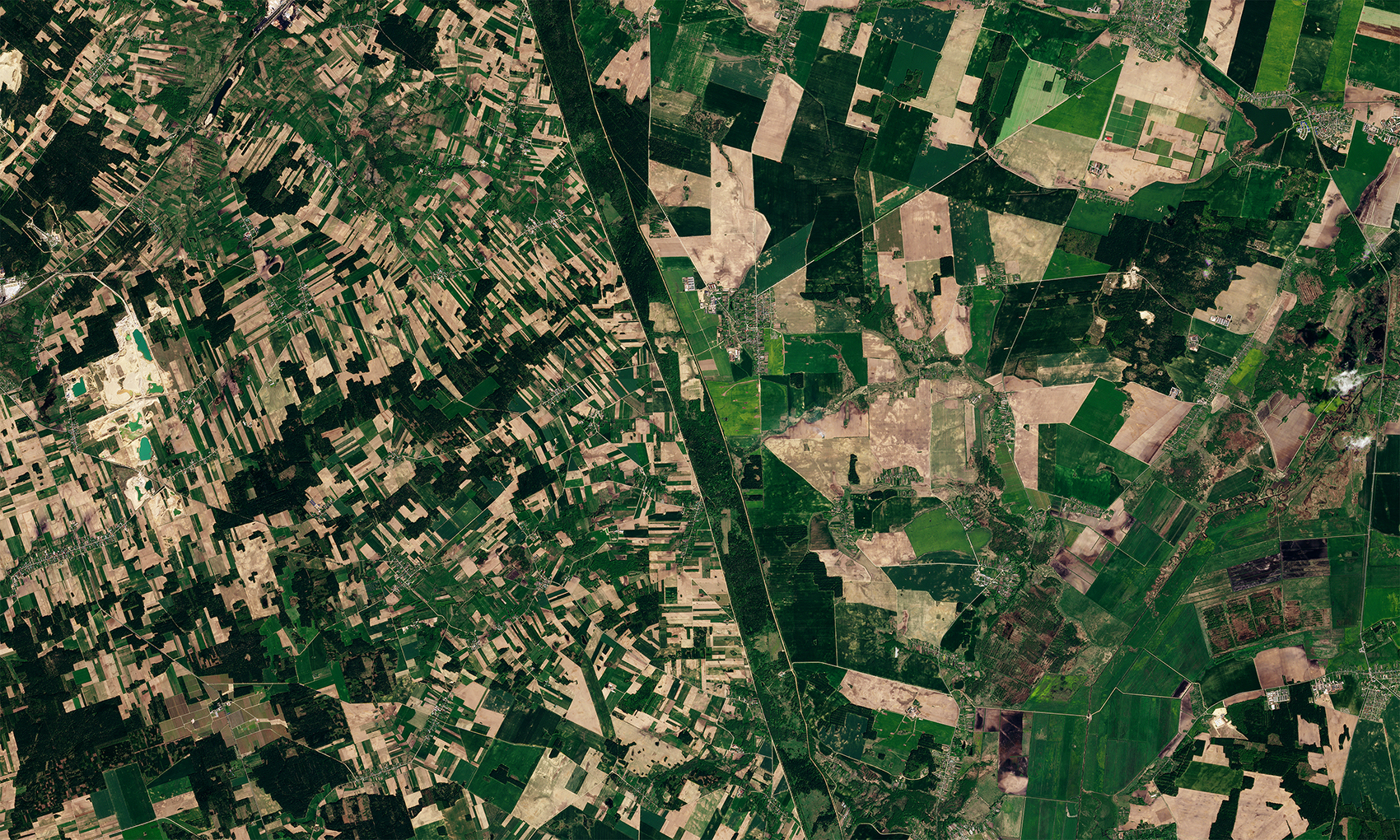 |
PlanetScope • Buffer between border of Poland (left) and Belarus (right) • May 1, 2023 |
In this week’s issue:
Having trouble viewing images? Then read this issue on Medium!
|
|
|
|
|
FEATURE STORYBuffer Zones
In Iraq, the border between two city states had been marked by a marble pillar with nearly indecipherable symbols. But that’s to be expected when the words are written in Sumerian cuneiform and left outside for 4,500 years. The pillar, now on display in the British Museum, is the world’s first—but by no means last—record of a border dispute, and the first use of the phrase “no man’s land.” It’s sentimentally human, an object engraved with stories, beliefs, and conflict all in one. But if you read between the lines, a subplot emerges: ever since we’ve had the ability to write, we’ve been using it to keep others out.
A buffer zone is a neutral area between two regions or around a sensitive area. There are many types, from those that insulate national borders to the practice of social distancing. Anyone with a sibling or a long-term partner understands that sometimes a line isn’t enough; you need space. But while “no man’s land” might serve as our species’ first buffer zone, the threats in the 21st century are far more varied and often less tangible. We’ve gone from “barbarians” to biodiversity loss, forts to firewalls. The lines today are more complex and irregular. So we build buffer zones to help deal with the uncertainty that they entail.
|
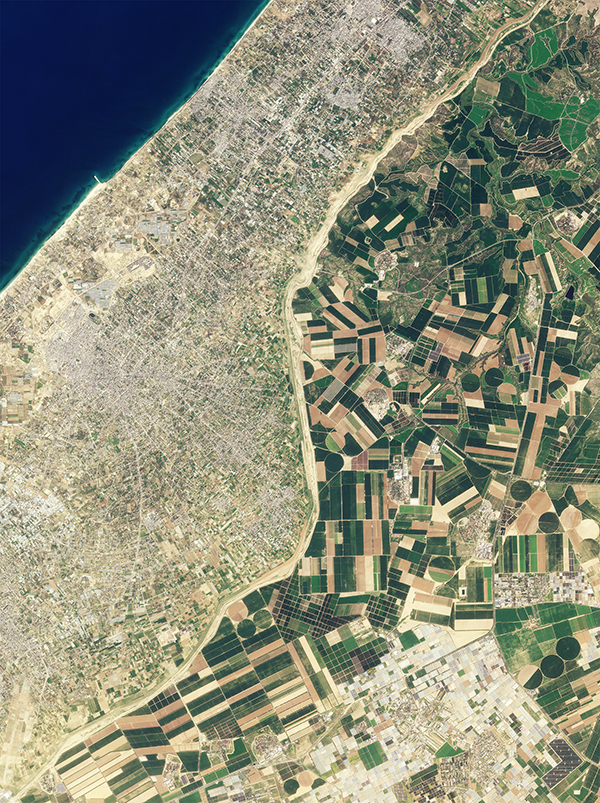 |
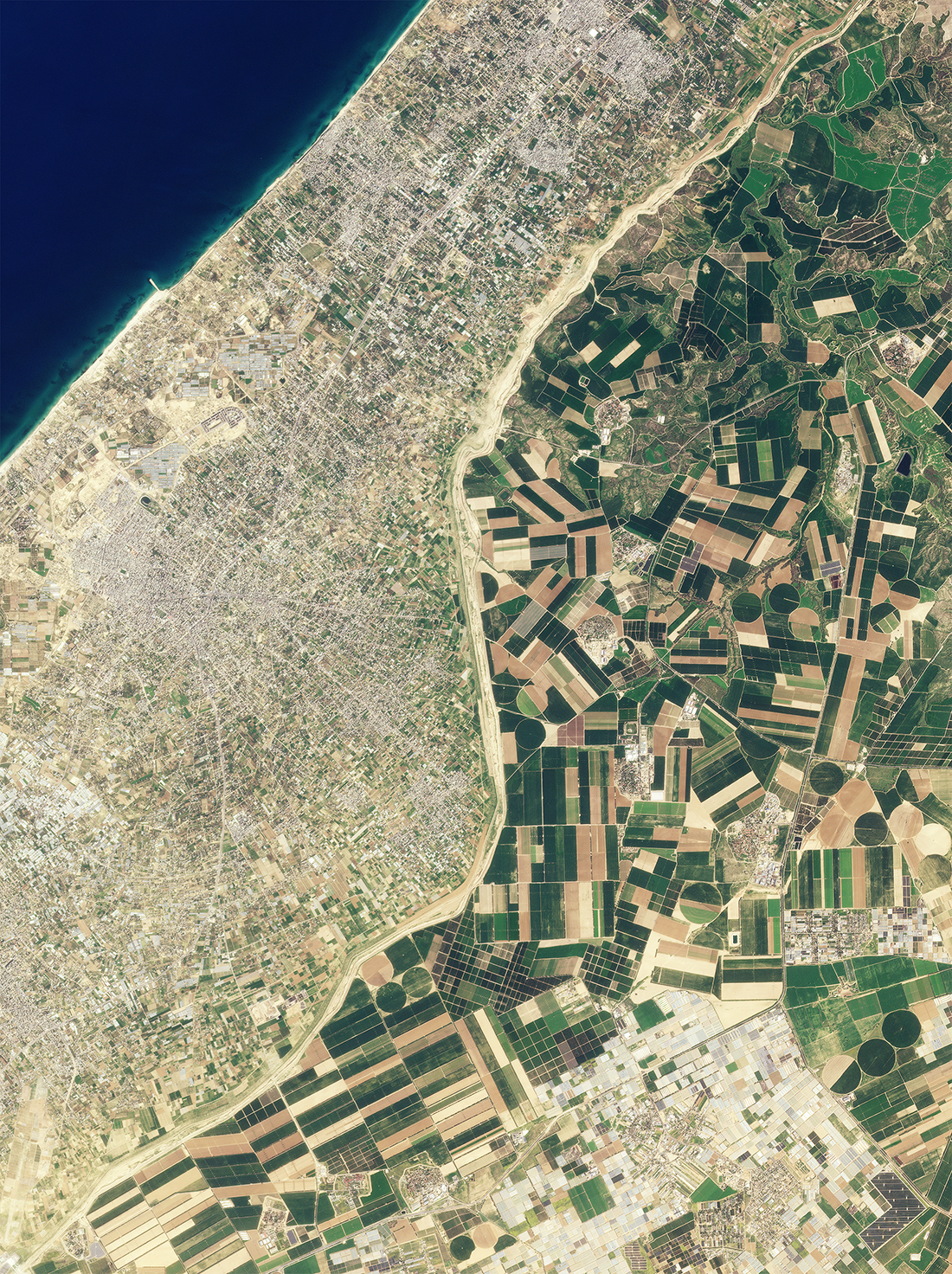 |
PlanetScope • Border between Gaza Strip, Palestine and Israel • March 2, 2023 |
Like the Sumerian marble pillar, satellite images capture etchings in landscapes that reveal stories about a place’s history and its people. This is especially so for places at intersections. And if seas could have crossroads, Cyprus would be on it. The ancient island is a gateway between Asia and Europe and has been occupied by a rotating cast of empires over the millennia. Turkey and Greece now share the island, along with a UN-controlled 180-km-long buffer zone. Its width is narrowest in the capital city Nicosia, with the line visible in green as it extends through the circular old city.
|
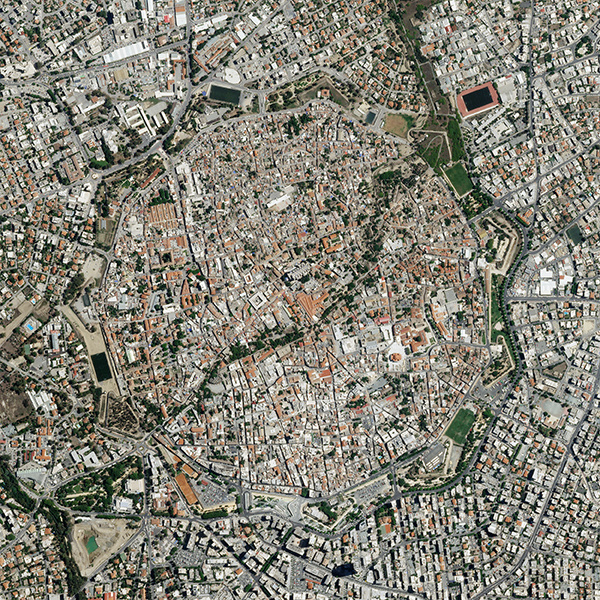 |
 |
SkySat • Nicosia, Cyprus, Turkey & Greece • June 15, 2023 |
Leave these divisions alone long enough, however, and novel entities emerge in the space between. The demilitarized zone separating North and South Korea is a 2-km-wide (1.2-mi) heavily-fortified strip that bisects the entire peninsula and was built to help ease tensions between the two countries following the Korean War. Nearly every inch of the buffer zone is carefully watched, yet few feet tread on it. Meaning that for nearly 70 years this swath—seen a darker shade of green here—has remained largely undeveloped and has even become a wildlife sanctuary. |
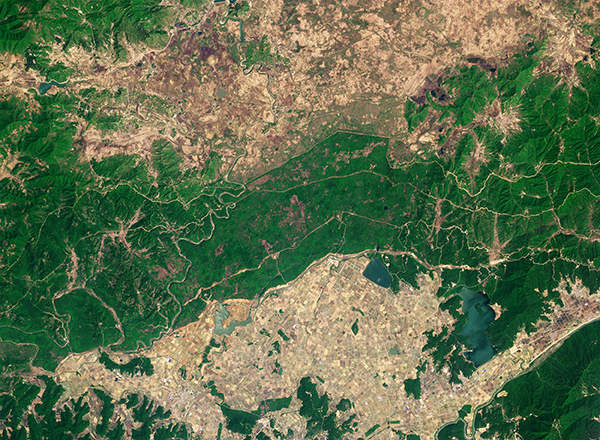 |
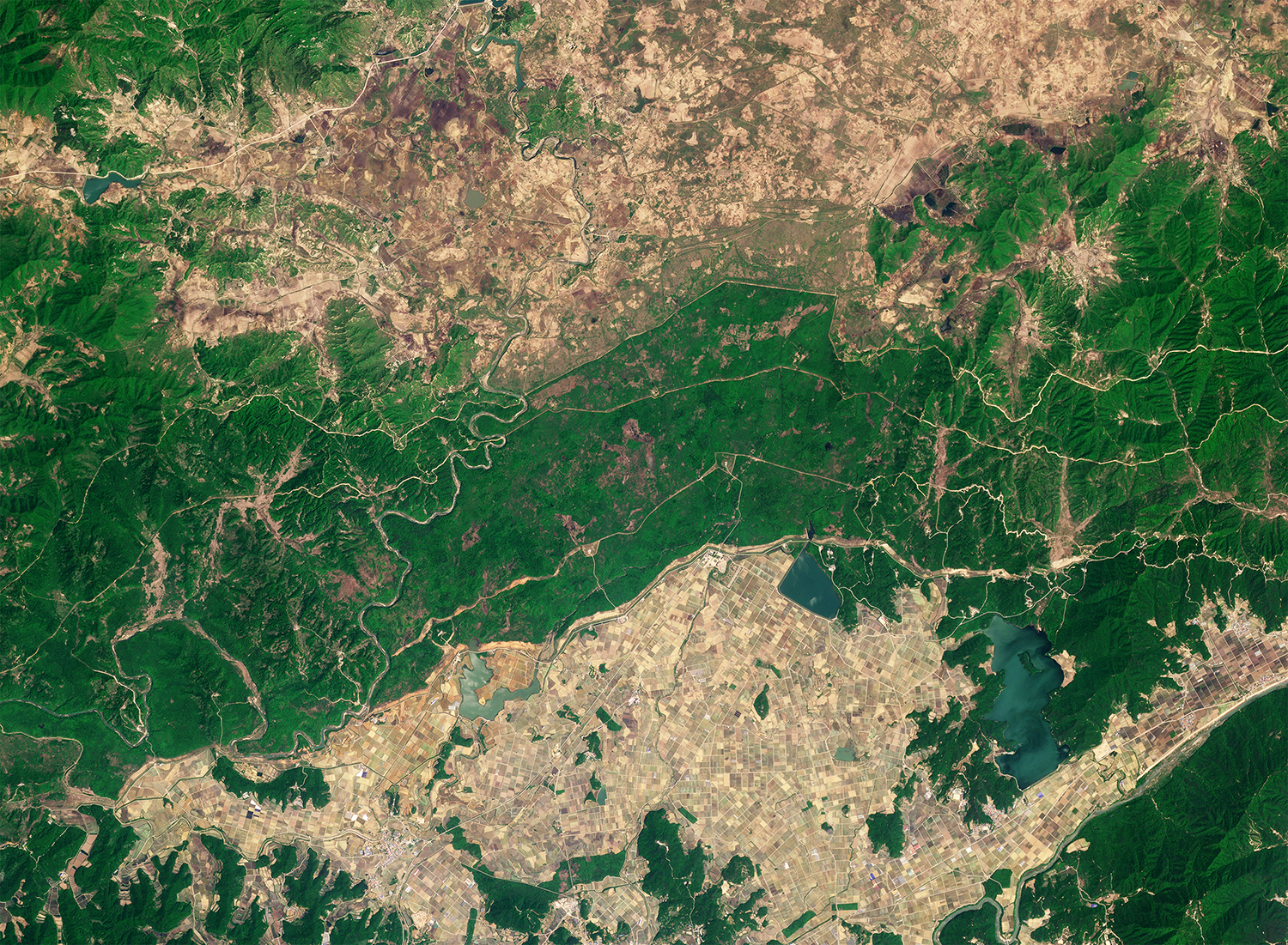 |
PlanetScope • DMZ, North Korea & South Korea • April 13, 2023 |
World War I was largely fought by and because of men, yet it took place on a patchwork continent of “no man’s lands.” Countless buffer zones lined the vast maze of trenches over a century ago, but today a different buffer zone has taken shape. So much artillery was fired during the war that France established a 42,000-acre protected territory called Zone Rouge, now forested amid agricultural fields. Areas like Zone Rouge and Chernobyl are also called exclusion zones, and act as a sort of temporal buffer for the unexploded ordnance or nuclear contamination lurking within the land. |
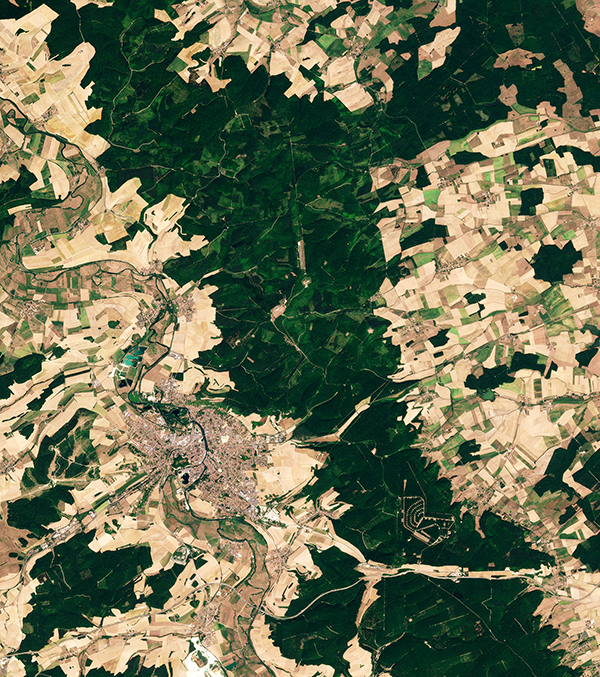 |
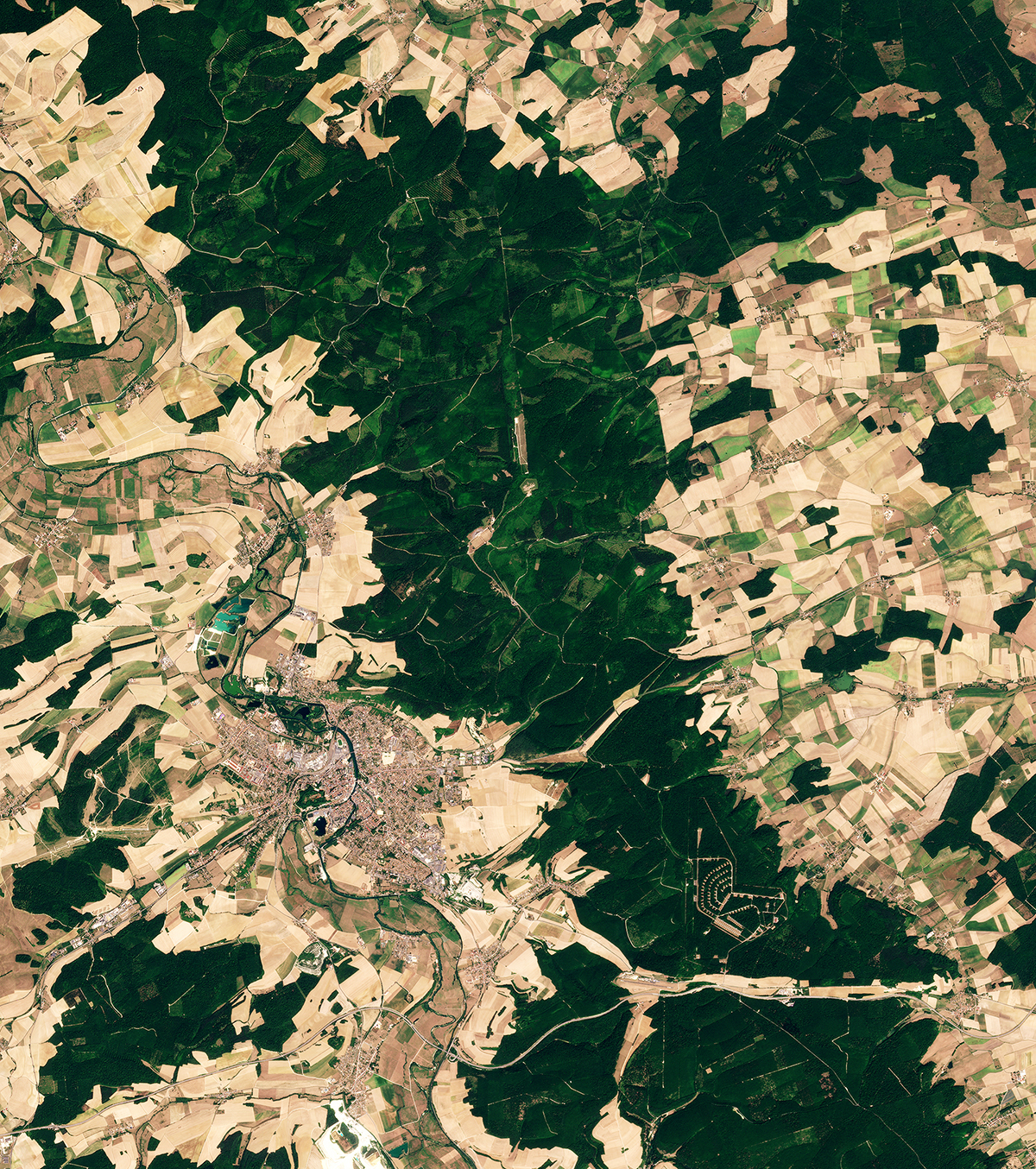 |
PlanetScope • Zone Rouge, Verdun, France • August 13, 2022 |
Like the Sumerians, territorial disputes continue to be common. But new threats have emerged. And along with them, new buffers. Climate change is accelerating and intensifying processes like desertification and biodiversity loss. In response to the former, countries are planting continent-spanning green walls to combat the encroaching desert. And, for the latter, protected environments are growing as a number of forces have jeopardized global biodiversity. |
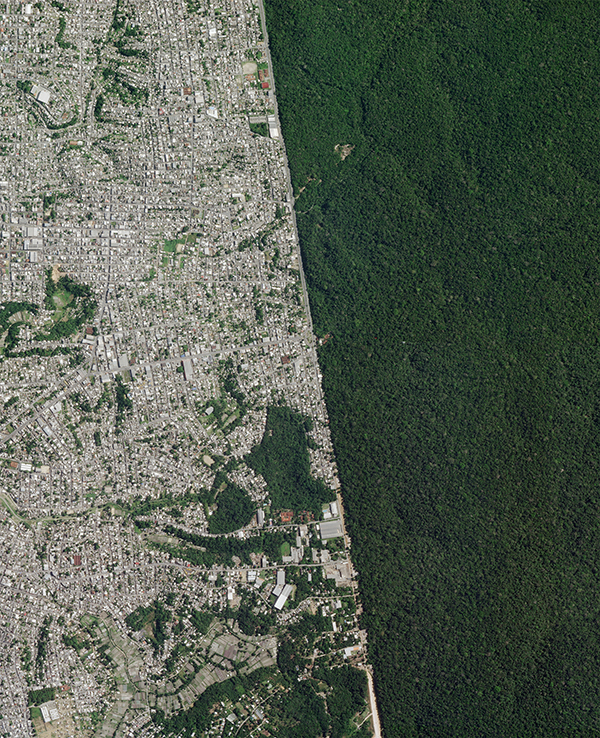 |
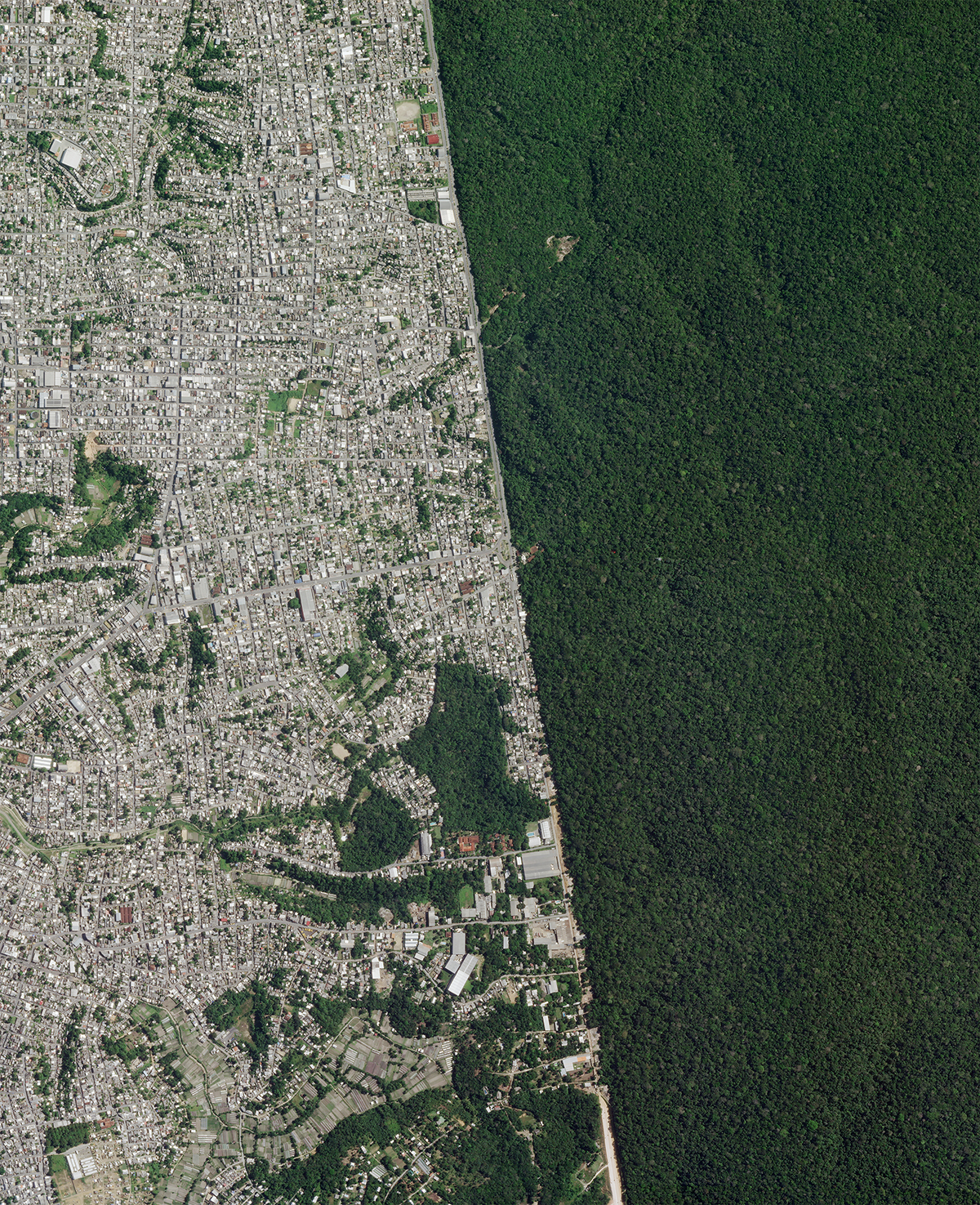 |
SkySat • Adolfo Ducke Forest Reserve next to Manaus, Brazil • June 26, 2022 |
Animals have been largely overlooked as we created maps, borders, roads, and all the other networking infrastructure needed to parcel land for civilization—as we decided what we call home, we inadvertently decided theirs too. But experts have begun rectifying the detrimental mistakes caused by habitat fragmentation. Wildlife corridors and crossings connect protected reserves and help minimize the negative impacts of our developed networks. |
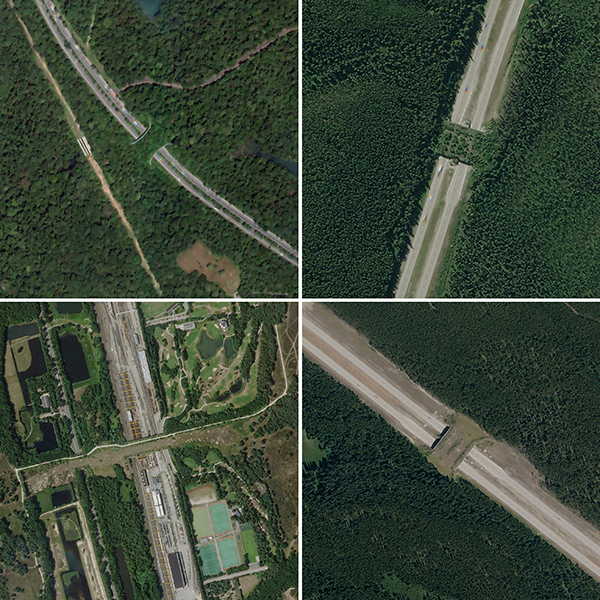 |
|
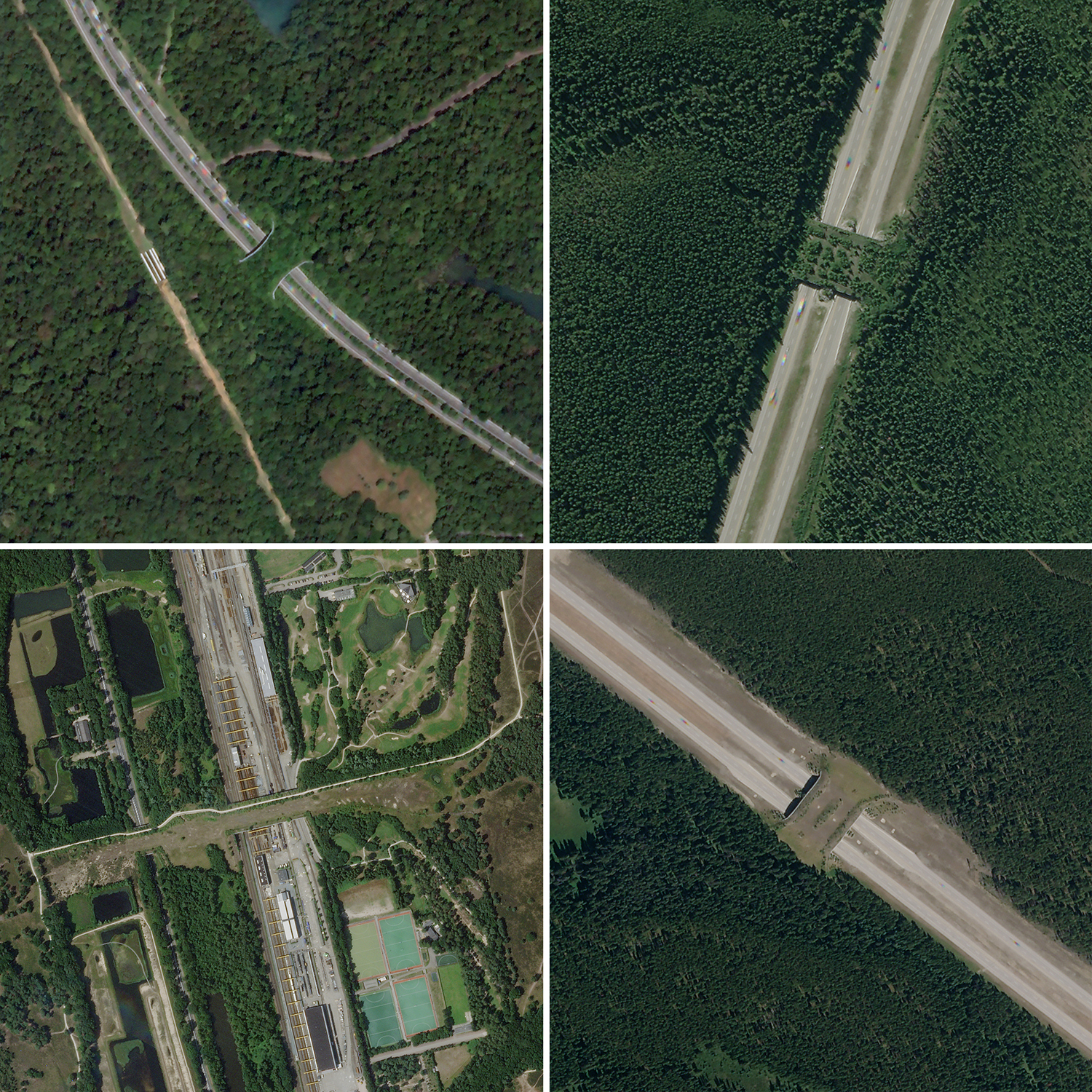 |
TL: SkySat • Eco-Link, Singapore • April 12, 2021 |
TR: SkySat • Banff National Park, Canada • July 21, 2022 |
BL: SkySat • Banff National Park, Canada • August 9, 2022 |
BR: SkySat • Natuurbrug Zanderij Crailoo, Hilversum, Netherlands • July 17, 2022 |
Historically, buffer zones have served as places for prevention and protection; a safeguard from whatever resides beyond. But the existing borders of our world are changing—sometimes literally. And with new ones emerging, we’ll need to adapt. In some cases that will mean creating new buffers, like areas to defend against sea level rise or around potentially harmful areas. But others may need to be reconsidered, so that they don’t just divide the landscape, but connect it too. |
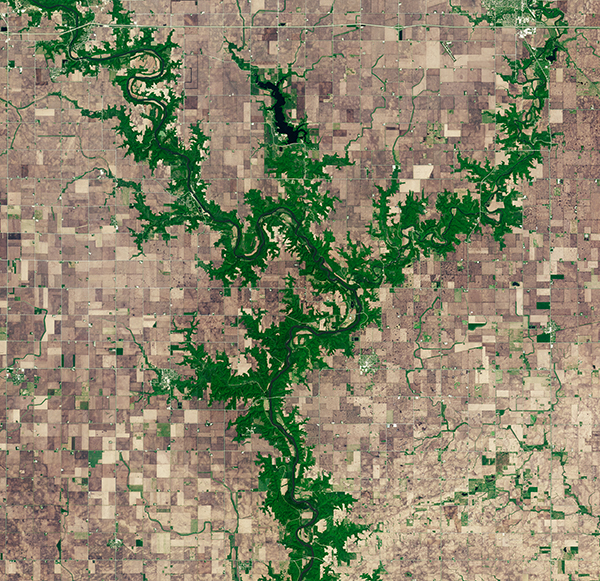 |
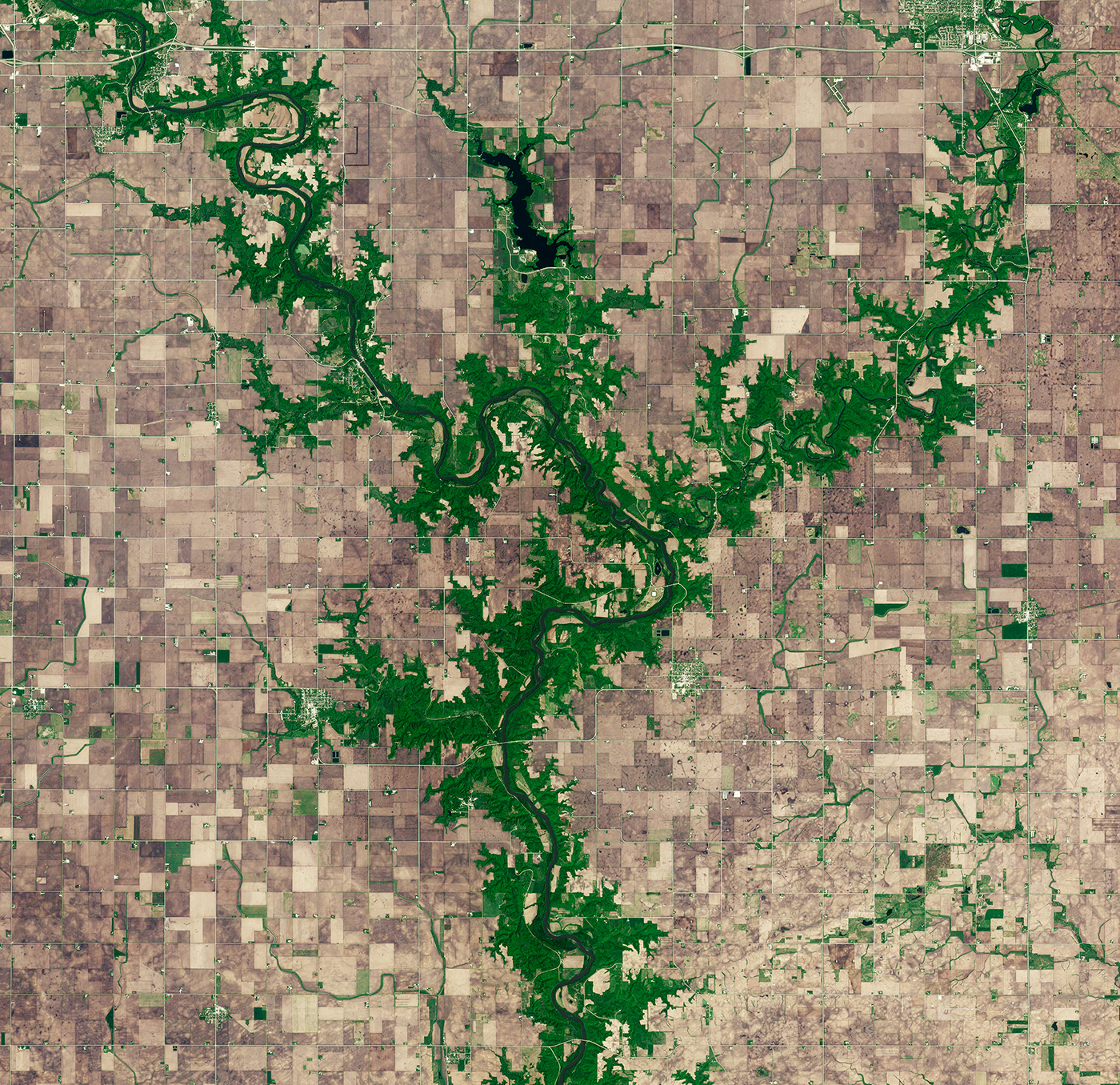 |
PlanetScope • Riparian buffer strip, Fort Dodge, Iowa, USA • May 20, 2023 |
|
|
|
|
|
|
|
|
|
|
|
REMOTE SENSATIONSRain Shadows
Nature has its share of buffer zones too. In the case of many mountain ranges, the divide between deluge and desert are its peaks. Stand atop the world’s tallest mountains—or sit and look at satellite pictures—and observe the two sides: one verdant and the other barren. If your view is obscured by clouds, that’s kind of the point. This phenomenon is called a rain shadow, and it happens when one side of a mountain range receives all the rainy weather and the other doesn’t. |
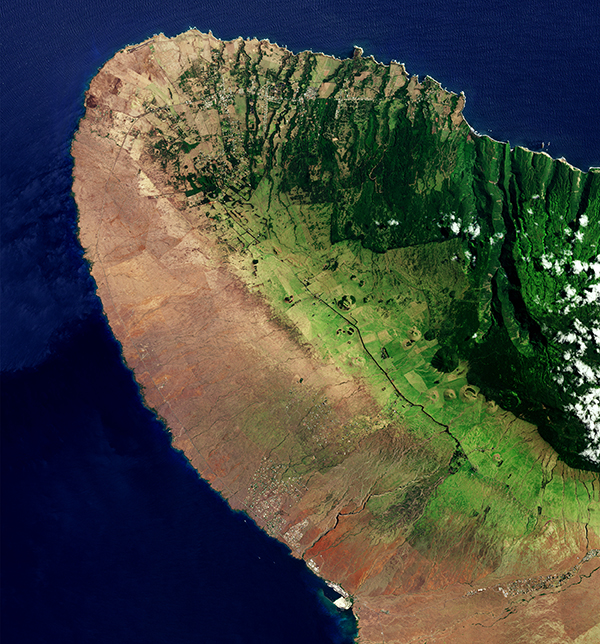 |
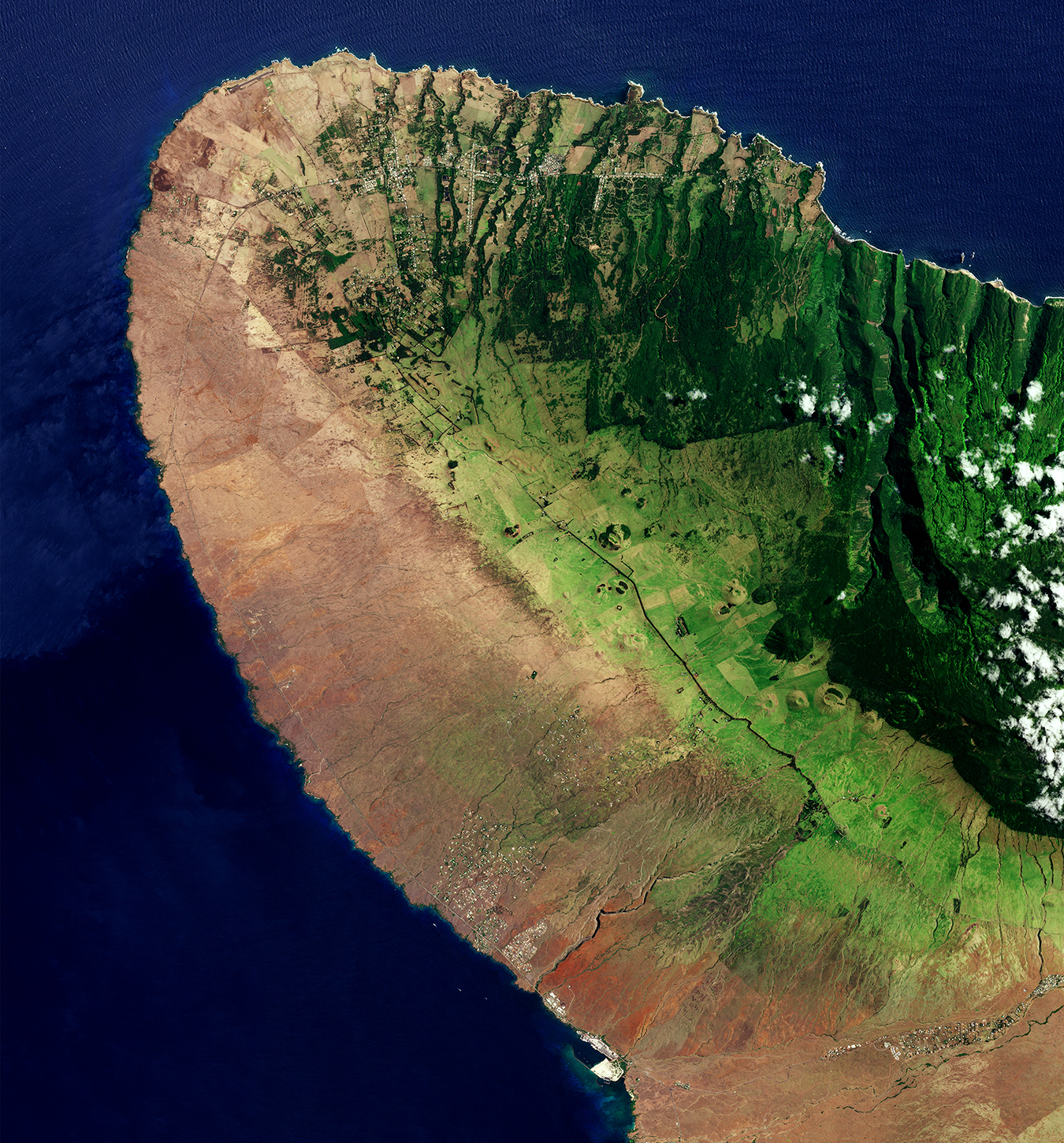 |
PlanetScope • Kohala, Hawaii • July 14, 2023 |
In short, air masses get larger and colder as they move up in elevation. At a certain point its water vapor condenses and falls as rain, barely leaving anything by the time it reaches the other side. It’s especially pronounced for higher mountains, which is why The Himalayas create such a stark difference. |
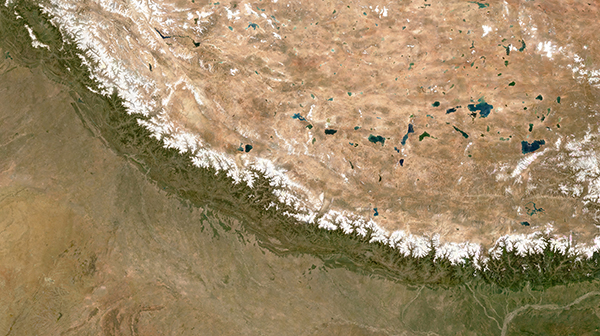 |
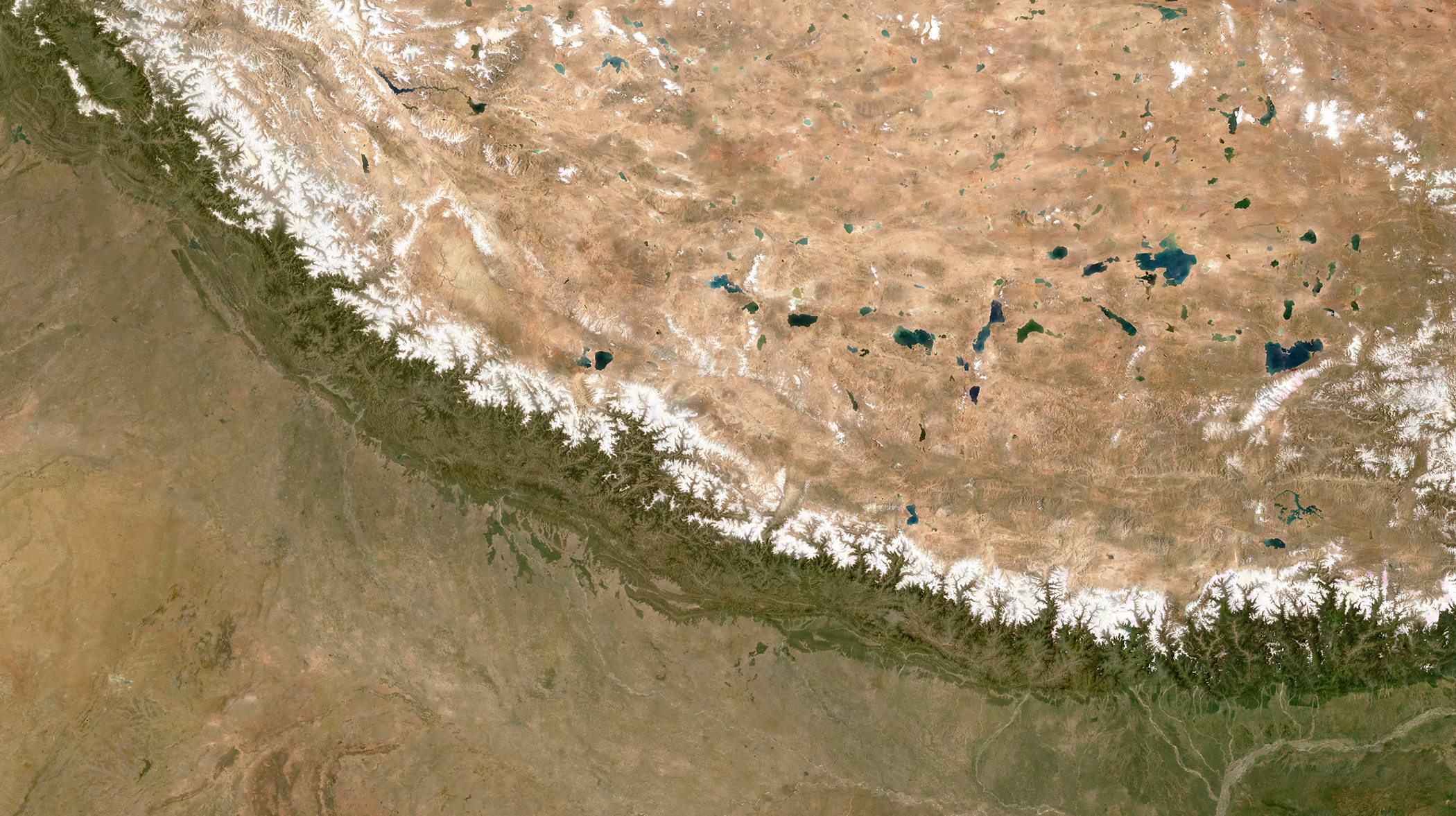 |
Quarterly Basemap • The Himalayas, Asia • 2020 |
All-in-all, this precipitation phenomenon creates a sort of Harvey Dent-esque duality across the world, from Alaska to the Andes. Scroll around on Google Maps and you’ll notice the squall and silence all over. |
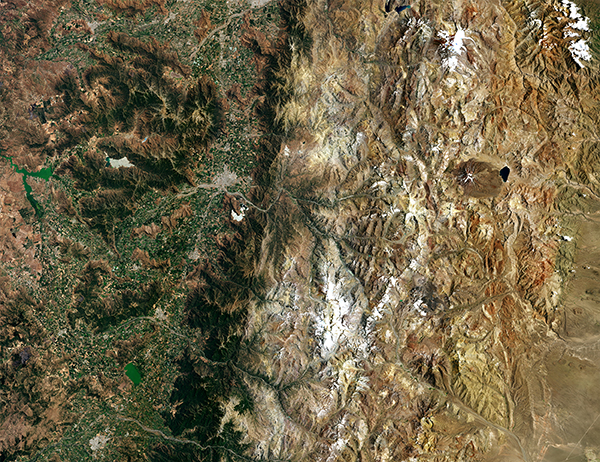 |
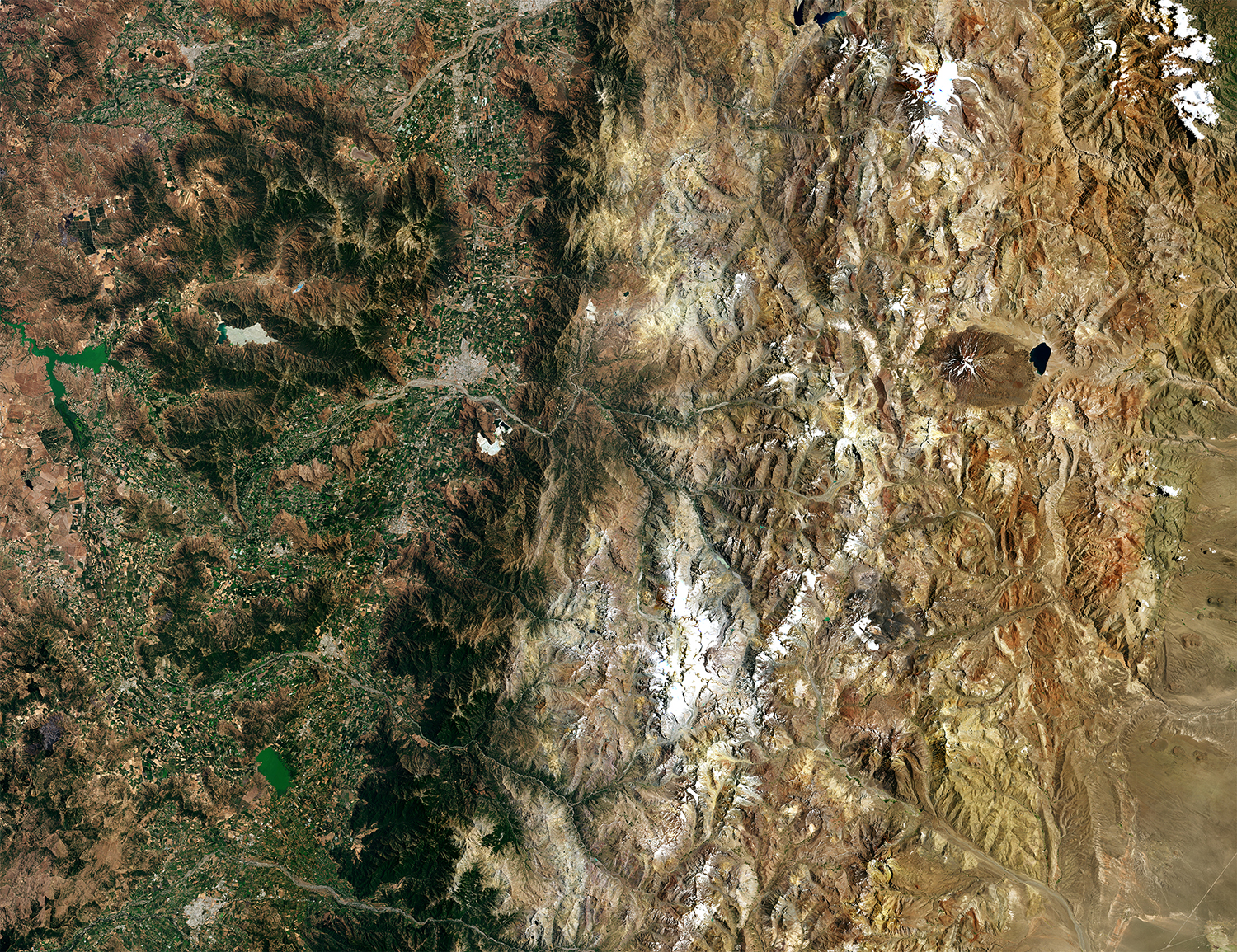 |
PlanetScope • Andes Mountains, Chile • December 21, 2022 |
 |
 |
PlanetScope • Tipaza, Algeria • August 3, 2022 |
Bonus: The entire eastern side of Madagascar appears to be a rain shadow, but we haven’t been able to confirm it. Have any ideas? Let us know! |
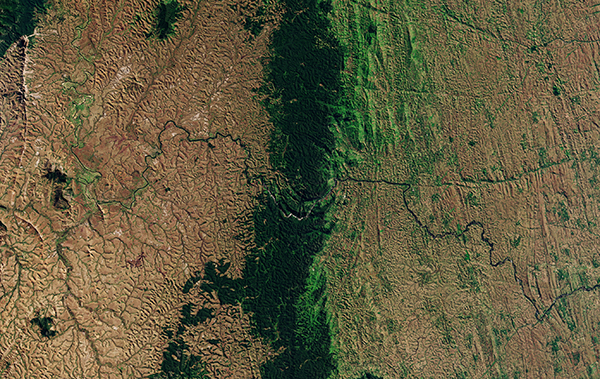 |
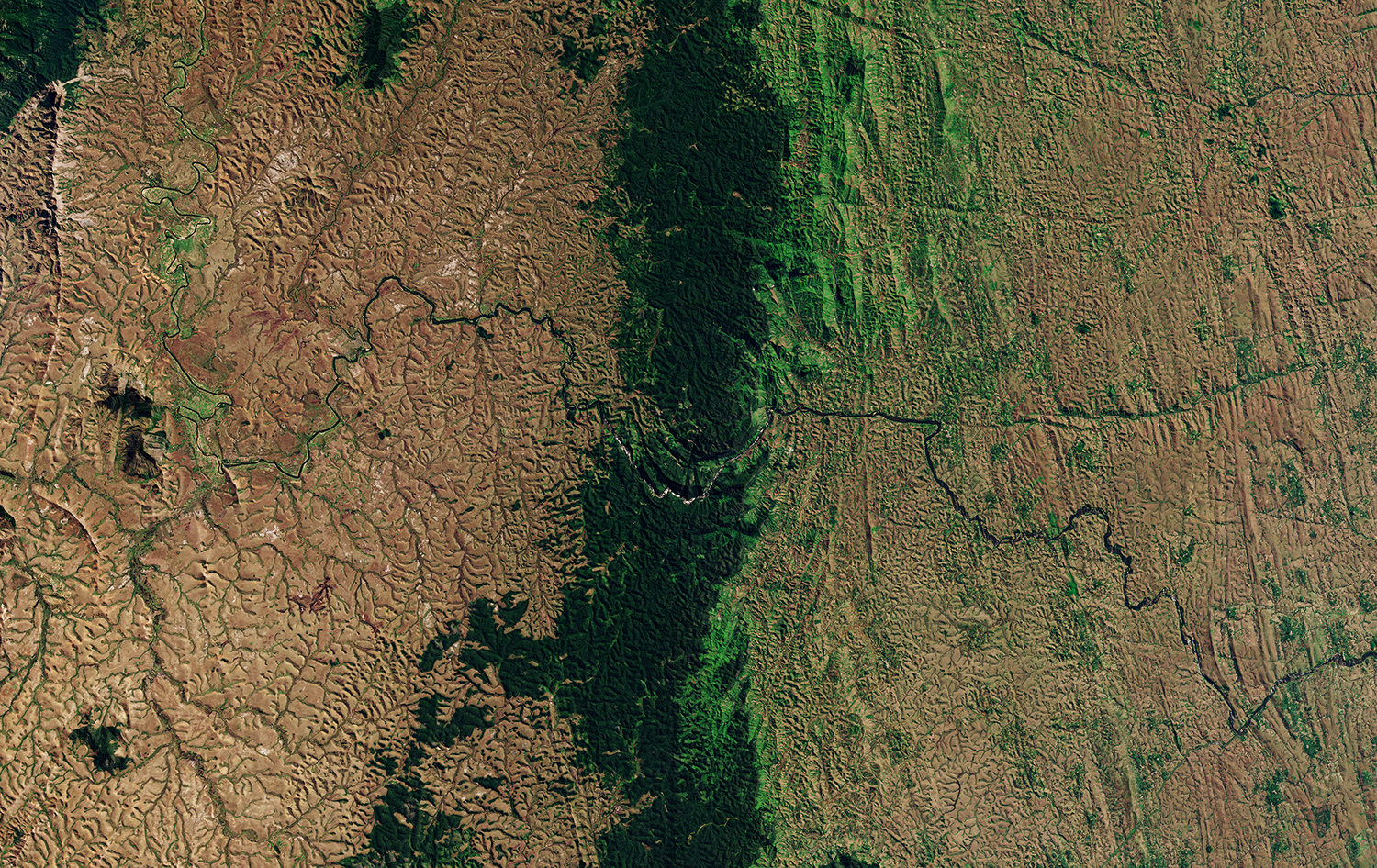 |
PlanetScope • Vondrozo, Madagascar • August 13, 2022 |
|
|
|
|
|
Weekly Revisit
Last week we explored the current threats to biodiversity and some of the ways satellites are helping promote conservation. So check it out in case you missed it and read more stories at the full archive if you’re extra curious. |
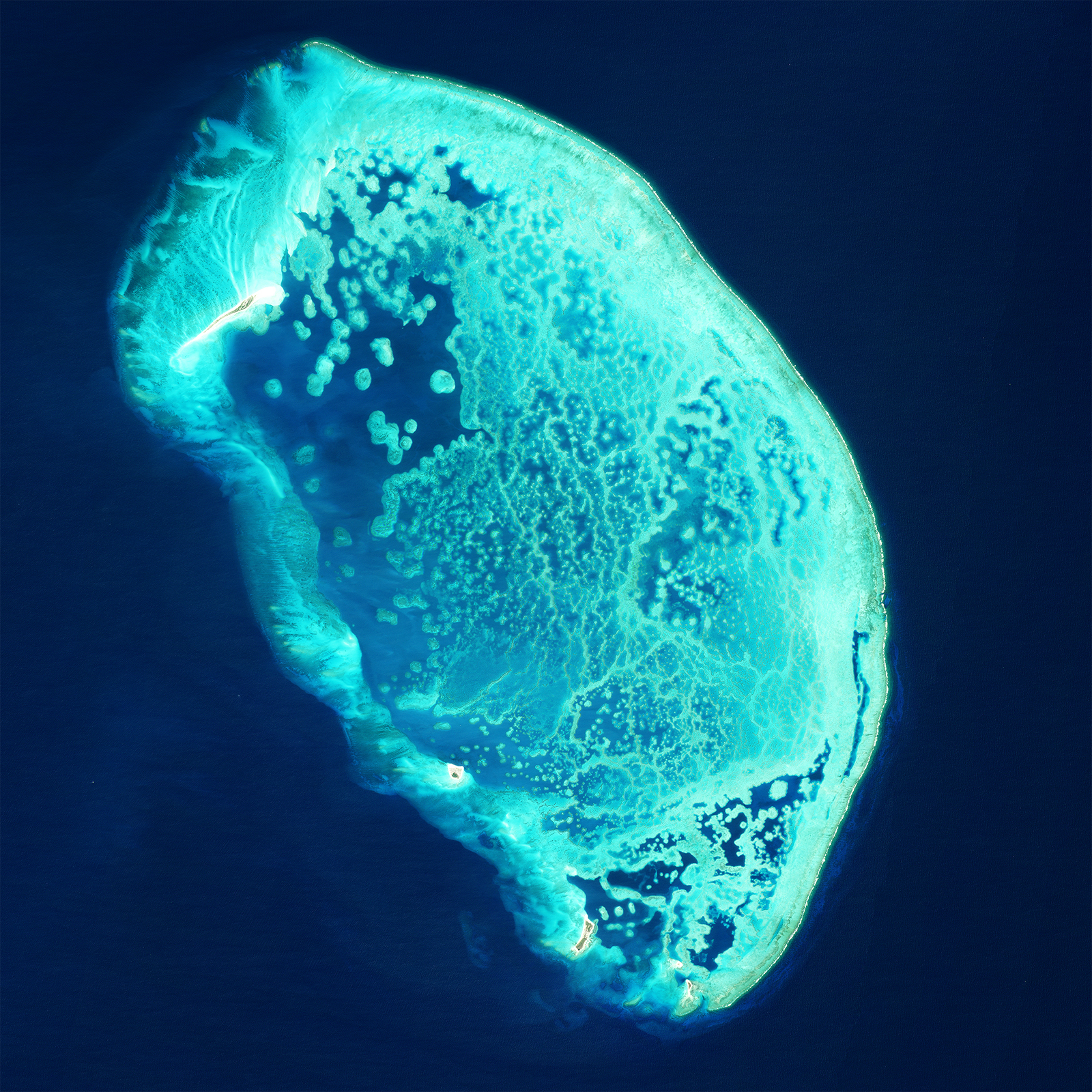 |
PlanetScope • Scorpion Reef, Gulf of Mexico, Mexico • February 25, 2023 |
|
|
|
|